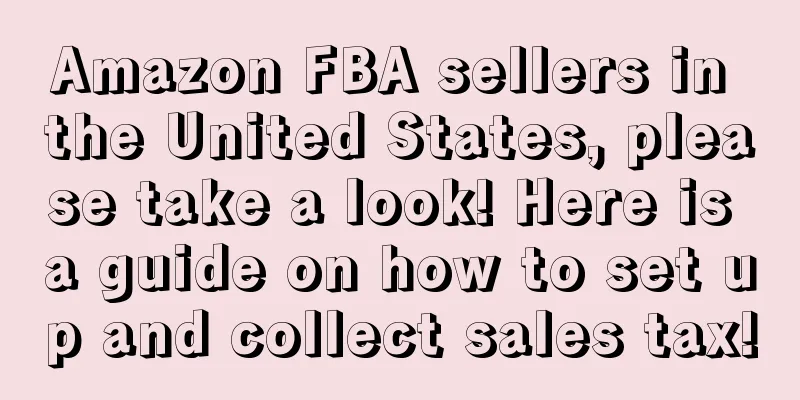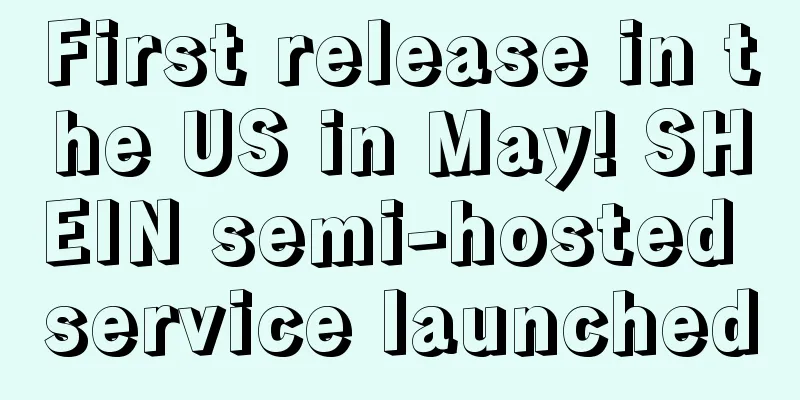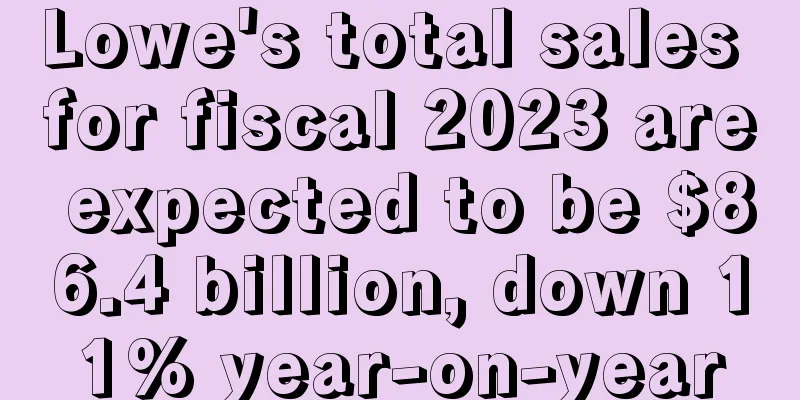Amazon FBA sellers in the United States, please take a look! Here is a guide on how to set up and collect sales tax!

|
As a seller, it is very important to understand Amazon FBA sales tax and related deductions. "Sales tax" applies to every retailer with a physical presence in the United States, whether small or large, physical and online. For sellers, Amazon FBA sales tax can be a bit complicated. The governments of 45 states and the District of Columbia in the United States collect sales taxes. Sellers need to collect taxes from buyers and then transfer them to the corresponding state governments. Each state is different when it comes to administering sales tax. As a result, each of the 45 states (and Washington, D.C.) has different sales tax laws and rates.
As a seller, you only need to collect sales tax from buyers if you have sales tax nexus with that state. While each state's laws and regulations are different, there are some key "nexus" conditions for each state, including: · Have a physical presence : a shop, office, showroom, warehouse or any other place of business; Inventory : usually inventory ready for sale (such as Amazon FBA inventory); · Personnel : salespeople, employees, installers, independent contractors or any other personnel; · Third-party affiliates : Click-Through Nexus, hires some affiliate marketing websites to help you drive traffic; · Dropshipping : Some dropshipping services may have sales tax nexus; Temporary sales : Sales generated at offline events such as trade shows or craft shows may also have sales tax nexus. If you are an Amazon FBA seller, you have sales tax nexus when you sell products in Amazon warehouses to states that collect sales tax, but Virginia is an exception.
Before you can charge sales tax to customers in a particular state, you need to register for a sales tax license in that state. Most people tend to avoid this step, but it is very important, otherwise it would be illegal to charge sales tax. Moreover, it is important to become a sales tax registrant yourself. In addition to this, you should also become a registered candidate for a sales tax license before applying to charge sales tax on Amazon, which can be easily done in the Seller Central. When you get your sales tax permit, you will also receive sales tax and tax filing deadlines. Depending on your sales volume, you can file taxes monthly, quarterly, or annually. When you have higher sales volume in a particular state, you will need to file more frequently. To charge sales tax, you must register with the appropriate state. To do this, you will need:
If you are an FBA seller, you can charge taxes if the following conditions are met:
After registering for a sales tax license, the next step is to make sure you collect sales tax from Amazon-related buyers. Amazon provides a powerful and practical sales tax collection system that displays accurate rates based on the corresponding state, even including complex details. Additionally, Amazon’s tax collection system is designed to attach a “Product Tax ID” so you can see the exact amount you’re charged for a specific product, whether it’s apparel, healthcare, beauty or groceries. Note: Amazon will charge a 2.9% handling fee on top of the tax. Another approach is to not charge any sales tax to the buyer and deduct the sales tax from the profit. To set up to collect sales tax on Amazon, follow these steps in Seller Central: Step 1: Log in to Amazon Seller Central; Step 2: Click on the “Settings” button and select the “Tax Settings” option from the drop-down menu; Step 3: Select “View or Edit the Tax Collection, Shipping, and Handling…. Giftwrap Tax Obligation Settings”. Follow the steps above to select the states where you want to charge sales tax. You can also enter a custom sales tax rate, but it is not recommended to enter it manually because tax rates change frequently. Also, remember that you need to register for a sales tax number before Amazon will allow you to set up your store to charge sales tax.
Click on “Tax Settings” in Seller Central: Seller Central > Settings > Taxes. Next, select the option to “View-Master Product Tax Codes & Rules” and then under the Help option, find the product tax code that matches the product you sell. Some examples include:
Considering that Amazon FBA sellers want to comply with tax policies but are afraid of states retroactively paying unpaid taxes, several states in the United States have launched Amazon FBA sales tax amnesty, which allows Amazon FBA sellers to register and start collecting state sales tax without having to worry about state governments retroactively paying unsubmitted taxes. States that currently have an Amazon FBA sales tax amnesty include:
*Note: If you currently do business in a state that Amazon has granted amnesty to, it is best to consult the appropriate tax agency for professional advice before registering to collect Amazon FBA sales tax.
Report and submit Amazon FBA sales tax Once you start collecting Amazon FBA sales tax, it’s important to keep the tax collector informed of all your business activities. You’ll undoubtedly need to note the sales tax filing date (you can check this information on the authorities’ website) so that you can submit a refund to the tax authorities and account for the amount of sales tax you accrued from your customers. Most authorities will certainly want to know the amount of sales tax you collect in a state, as well as the amount you collect from consumers in each city, county, and taxing district. To report all this information, please download a detailed and clear reporting form from Amazon. To do this, you need to do the following: Step 1: Log in to Seller Center; Step 2: Select the “Seller Central” option and click on “Reports”. Step 3: Under “Reports”, select “Payments”. Step 4: Click Generate Date Range Report. Step 5: Select your tax filing date. At this point, you can manually calculate the taxes you have accumulated so far in a specific area. However, this is time-consuming. Alternatively, you can use Amazon Seller Tax Software to quickly calculate, and it also supports multiple seller accounts. The next step is to file your tax return, which can be done online. Follow these steps: Step 1: Go to the official website of your state tax authority; Step 2: Submit sales tax return following the guidelines given there; Step 3: Make payment through the website’s secure gateway. When filing your taxes, always file "Zero (0) Returns." This means that even if you did not collect sales tax during a specific time period, you still need to file your taxes by the same deadline. Be aware of some sales tax discounts, though, as most states allow eCommerce sellers to receive a small portion of their sales tax refund, similar to an incentive. Text✎ Fang Xiaoling/ Statement: When reprinting this article, the title and original text must not be modified, and the source and original link must be retained. |
<<: Amazon Review Practice - The Difference Between Feedback and Review
>>: Amazon Multi-Account Security Operation Guide
Recommend
Fake reviews are rampant on Amazon and Walmart! US government agencies will vigorously regulate!
It is learned that according to a survey by Fakesp...
Sales volume cut in half! Who “swept away” Amazon’s traffic?
It is the end of October, and traditional peak sea...
What is Konggu Interactive? Konggu Interactive Review
Konggu Interactive mainly engages in Amazon CPC ad...
US Teenagers Fall Consumption Survey: Amazon and Shein Are Popular
<span data-docs-delta="[[20,"获悉,根据派珀•桑德勒(P...
What are the advantages of Amazon short videos? How to promote them?
How to operate the brand promotion video function...
Overstock is selling off other retailers' unsaleable inventory as U.S. home furnishing demand plummets
<span data-shimo-docs="[[20,"获悉,据外媒报道,美国家居...
What is Amazon Super URL? Amazon Super URL Review
An Amazon Super URL is a link that directs users t...
Share an FBA label template and PDF editor to ensure that every product labeling is fast, accurate and simple!
1. Let me tell you why I share this operation skil...
Trump's power bank appeared in the spotlight, is Anker in trouble?
Anonymous user My C position Chinese power banks a...
What is YiChuang? YiChuang Review
YiChuang (YiNet Innovation Technology (Guangzhou) ...
Another popular brand is banned? Amazon sends out another batch of warning emails about fake orders!
The "2021 Amazon Annual Account Banning Opera...
TikTok will launch "content rating" and "filtering" functions! Limit viewing by minors!
<span data-docs-delta="[[20,"获悉,",&qu...
What is Fenghuo Cross-border? Fenghuo Cross-border Review
Fenghuo E-Commerce Co., Ltd. is an enterprise dedi...
Essential Tips | From 0 to 1! Amazon's newbie's guide to opening a store
Sellers have been looking forward to the long-awa...
Four things you must know about Amazon advertising
Amazon Advertising has seen incredible growth in 2...









